 полная версия
полная версияButterflies and Moths (British)
So the young caterpillar eats, and rests, and grows, till, while still young, its body has become too large for the already tightened skin. It evidently feels very uncomfortable. Its appetite fails, and it remains for a time perfectly quiet in one spot, having previously spun a little carpet of silk to form a firm foothold during its temporary indisposition. Its colours have also become dingy, and anyone, not understanding the character of its growth, might easily be led to suppose that the poor creature was displaying the earlier symptoms of a serious and perhaps fatal illness.
But soon an encouraging symptom is observed. The caterpillar begins to get restless. Its front segments are turned alternately right and left, and are also made to swell out much beyond their normal size. Then in a very short time – often less than a minute from the first appearances of restlessness – the skin, which has become somewhat dry and brittle, splits along the back over the second, third and fourth segments, revealing a new and bright coat beneath. The caterpillar continues its struggles and, in addition to the previous movements, causes the swelling to move backward along the body. This, acting like a wedge, causes the rent in the old coat to extend in that direction.
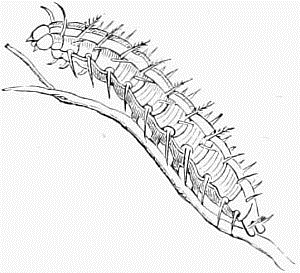
Fig. 15. – The Caterpillar of the Dark Green Fritillary Butterfly.
The caterpillar now draws its head backward, and, with a few convulsive struggles, pulls the front segments out of their old skin, and passes its head out of the rent in the back. With its foremost segments thus rendered perfectly free, it walks straight out of the old garment, which is left still fixed by the legs to the silken carpet.
The larva, although now fresh and smart in its appearance, is exhausted by these struggles and its prolonged fast. The new skin, moreover, is very soft and tender, even to the cases of the head and legs, which are normally very hard. But a short period of rest suffices to dry its skin and sharpen its appetite, and then it eats more vigorously than ever.
We will now leave the caterpillar for a moment while we look at its cast-off clothes. They are still clinging to a stem so firmly that they can scarcely be removed without injury. The hard shell that covered the head and jaws is perfect in form, and so are the claws and cases of the legs. All the hairs or spines that happened to adorn the previous owner still retain their positions; and the whole skin, although always more or less shrivelled, is sometimes so slightly altered in form that it might be mistaken for a living caterpillar if not closely examined.
But this is not all. For, according to the accounts of some authoritative observers, the lining of the digestive organs, which is really a continuation of the outer skin, is cast off (or rather cast out) at the same time, as are also the linings of the larger breathing tubes which are presently to be described.

Fig. 16. – The Caterpillar of the Purple Emperor Butterfly.
We have seen that some caterpillars, on quitting their egg cases (which may really be regarded as the first moult), make their first meal of the old covering. So also some of them, in their future moultings, exhibit an apparently useless economy (seeing that they are surrounded by an abundance of their natural vegetable diet) by devouring their old coats! In the face of this fact we can hardly describe them as strict vegetarians.
Having thus passed through its first hardship, the caterpillar has by no means seen the end of the troubles and dangers that beset it; for, during its existence in the larval state, it has to go through a series of three, four, five, or even six moults, all of which are periods of considerable inconvenience, and perhaps even pain, and frequently prove fatal. And it is by no means an uncommon thing to meet with the lifeless body of an unfortunate individual who, as shown by its shabby appearance and the silken carpet under its feet, has evidently fallen a victim to the dangerous process of ridding itself of an old garment.
But this is only one of the many dangers to which caterpillars are exposed. Throughout every hour of the day the sharp and hungry eyes of the numerous insect-eating birds are searching the leaves for such delicacies to satisfy the wants of themselves and their broods. The lively little lizards, too, during the sunny hours are busily engaged in searching them out among the foliage of heaths and banks.
Very formidable enemies also exist in the form of Ichneumon and other species of flies, which pierce the skins of caterpillars with their sharp ovipositors, and lay their eggs within the bodies of the unfortunate victims. As soon as the young larvæ are hatched from these eggs, they commence feeding on the fatty substance stored beneath the caterpillar's skin. They carefully avoid, at first, attacking the vital organs of their host's body, and in this way secure for themselves a more lasting supply of fresh food. When the fatty substance is nearly all gone, they eat their way into the more important structures, of course steadily growing all the time; and so, even though the body of the caterpillar is rapidly diminishing, the total bulk shows often no very appreciable decrease in size. When the larvæ of the flies are fully fed, they either change to the pupa within the carcase of their host, or eat their way out of its body and construct for themselves a cocoon in which to undergo the transformation.

Fig. 17. – An Ichneumon Fly (Cryptus Migrator).
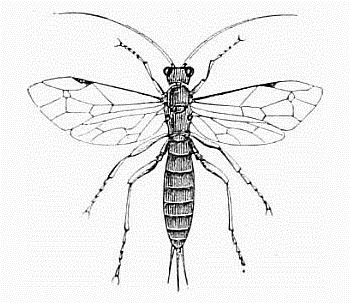
Fig. 18. – Another Ichneumon Fly (Pimpla Instigator).
As for the caterpillar itself, it sometimes dies before the time for its metamorphosis has arrived; but it often changes to the chrysalis before its fate is sealed. In this latter case, a number of flies, having undergone their final transformation within the chrysalis shell (there being but little else than shell remaining of the victim's body), break forth from the remains of the carcase somewhere about the time at which the butterfly or moth should have appeared.
Caterpillars have also their nocturnal enemies and devourers, among which may be mentioned frogs, toads, newts, and insect-eating mammals.
We must now learn something of the structure of caterpillars; and then become acquainted with their habits, and the change to the chrysalis or pupa.
Take a caterpillar from your garden, preferably a full-grown one of a rather large species, that is not very densely covered with hair, and examine it carefully as we note the main points in its structure. The first point that strikes our notice is the division of its body into segments or rings, separated from each other by a more or less distinct line or slight constriction of the body.
There are thirteen of these segments, reckoning, as is usual, the head as the first.
The head is usually very hard, and often of a much darker colour than the rest of the body. It is also frequently divided into two lobes by a couple of oblique lines, between which the parts of the mouth are situated. The two powerful horizontal jaws, to which we have already referred, are very hard and sharp, and curved like a sickle, and therefore splendidly adapted for biting from the edges of leaves. The head is also provided with a pair of antennæ, usually very short and inconspicuous and protected by a horny covering.
Unlike the perfect insect, the caterpillar has no large compound eyes, but twelve very small simple eyes, situated on the cheeks, very near the mouth – six on each side.

Fig. 19. – The Caterpillar of the Angle Shades Moth (Meticulosa).
If you examine them with a magnifier, you see that each one is provided with a small and very convex lens – a lens of very short focus, such as would be used for the examination of small objects held very near to the eye. From this arrangement we should be inclined to conclude that the caterpillar can see only those objects that are close to its mouth; and this idea is strengthened if you place one in a box containing a number of leaves, one of which is that of its own food plant. It will wander about the box, apparently looking at every part of every leaf it passes, after the manner of a very short-sighted individual, and never taking a general look round. A butterfly or a moth can see a flower in the distance, for it flies unhesitatingly from one to another in the straightest and shortest path, but if you place a caterpillar in the centre of a ring composed of a leaf of its food plant and nine others from other plants, the chances are (nine to one) that it will not walk towards what it would like to have.
Again, the eyes are situated on the lower part of the cheek, directed slightly downward, and are therefore adapted for seeing what is just under its jaws as it walks along. Had we no knowledge whatever of the caterpillar's twelve little eyes, we should probably have thought that it sought out its food by some sense other than that of vision.
Another important and interesting feature of the head is the silk-spinning apparatus, situated under cover of the lower lip. This consists of two tubular glands, corresponding to our own salivary glands, the special purpose of which is to secrete a viscid fluid that solidifies on exposure to air. The opening by which the fluid escapes is so situated that the caterpillar can easily apply it to the surface of any object over which it is walking, and then, by drawing or turning away its head, cause a silken fibre to be produced.
Some caterpillars make use of this spinning apparatus only on a few special occasions, but others, more especially some of the smaller species, seem to have it always in use, so that if at any time you suddenly start them into the air by giving a smart tap to the plant or twig on which they rest, they invariably fall slowly on the end of a growing web, the spinning of which they stop as soon as they consider they have fallen far enough. Sometimes, as you are walking through a wood, you will see hundreds, nay, thousands of little caterpillars thus suspended, swinging gently in the breeze. Not long since, after only a few minutes' walk among the trees of Epping Forest, I found I was decorated with several dozens of these swingers with which I had come into collision – in this case consisting chiefly of the larvæ of the Green Tortrix Moth (Tortrix viridana).

Fig. 20. – Walking Leg of a Caterpillar.
Now let us examine the caterpillar's limbs. Attached to each of the second, third, and fourth segments is a pair of true walking legs, corresponding with those of the perfect insect. These are covered with a hard and shining substance, and are also each provided with a hook. The fifth and sixth segments have no limbs at all, nor have the eleventh and twelfth, but some or all of the others (seventh, eighth, ninth, tenth, and thirteenth) are furnished with a pair of claspers which we shall presently describe.
First, as regards the number of claspers, it will be seen from what has just been said that this is not always the same. Some caterpillars possess five pairs, thus making up the total number of walking appendages to sixteen. In fact, we must regard this as the usual number. But there are at least a few hundred exceptions to the rule. Many of the Bombyces (page 217), for example, have only four pairs of claspers; and in others of the same group the fifth pair is present, but only partially developed, and quite useless for walking.

Fig. 21 – Larva of the Yellow Underwing Moth (Pronuba).
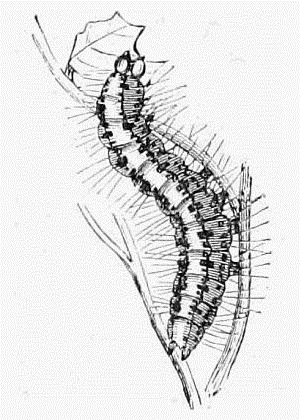
Fig. 22. – Larva of the Crimson Speckled Moth (Pulchella).
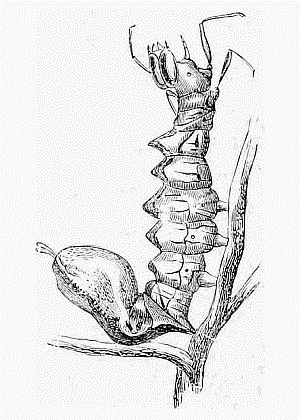
Fig. 23. – Larva of the Lobster Moth (Fagi).
Look at the peculiar caterpillar of the Lobster Moth (fig. 23) – a creature that differs from most other caterpillars not only in its claspers, but in many other respects too. Observe its long and slender legs, its humped middle segments, and its upturned hindermost segment, of enormous size and mounted with a pair of clubbed 'horns.' This last segment you will observe, has no claspers.
Another allied caterpillar is that of the Iron Prominent Moth (fig. 24). This one also has humped segments, and the claspers of the thirteenth segment are imperfectly developed.
A large number of other exceptions to the general rule are to be found in the caterpillars of the Geometer Moths (page 268), one of which is here represented. These have generally only two pairs of claspers, one pair on each of the tenth and last segments, so that there is a distance equal to the combined length of six segments between the hindermost true leg and the first pair of claspers. But even among the Geometers there are variations to be observed in the number of claspers, and some of these will be pointed out in our brief descriptions of the commoner species.
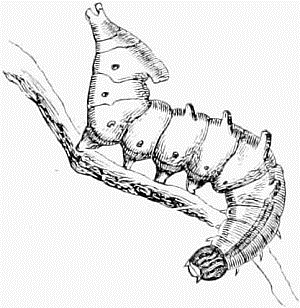
Fig. 24. – Caterpillar of the Iron Prominent Moth (Dromedarius).

Fig. 25. – Larva of the Brimstone Moth (Luteolata).
These limbs which we have been calling claspers are known by several other names. Thus they are termed 'pro-legs,' 'temporary legs,' 'false legs,' and 'abdominal legs;' but if you watch a caterpillar as it walks up a stalk or along the edge of a leaf, you will certainly agree that the term 'clasper' is everything that could be desired. But why not call them legs, seeing that they are used in walking? The reason is that they differ in many respects from the three foremost pairs of limbs as regards structure, persistency, and function. The true legs, as we have called them, continue to exist, though concealed, in the chrysalis state, and again appear, far more perfectly developed, in the butterfly or moth, but the claspers are no more to be seen after the caterpillar has passed into the quiescent stage. We have noticed, too, that the true legs are pointed and clawed, also that they are protected by a hard and horny covering; but examine a large caterpillar, holding it between the fingers and thumb with its under side uppermost, and you will soon see that the claspers are not at all hard, but soft and fleshy; not pointed, but often terminating in a broad flat circular surface. You will also observe, as the creature struggles to escape from your grasp, and tries to get a hold on something with its claspers, that these limbs, if we may so call them, are retractile, and are sometimes completely drawn into the body. Finally, examine the broad end of a clasper with a magnifier, and you will see it surrounded by a circle of little hooks, turning in all directions. You will no longer wonder how it is that a caterpillar can hold so tenaciously to a piece of twig that it is often almost impossible to remove it without injury.
Now put your caterpillar down, so that you may observe its gait. If it happens to be one with the full complement of sixteen limbs, you see that at each stride it makes but little progress. The segments contract and relax alternately and in succession, thus sending a series of wave-like motions along the body, and urging onward the front segments while the claspers keep the hinder portion firmly fixed.

Fig. 26. – The Claspers of a Caterpillar.
But if your caterpillar is one of the Geometers, with only two, or perhaps three, pairs of claspers, the mode of procedure is very different. The creature stretches its body out at full length, often raising its head high in the air, and swinging its long body right and left with a most furious motion, as if to hastily scan the neighbourhood. Then, having satisfied itself as to the direction of its proposed course (which, by the way, is often changed considerably at almost every stride), it holds on by the true legs and pulls its hinder quarters forward till the body forms almost a closed loop, with the fourth segment nearly touching the ninth. The claspers now become the holdfasts. The little hooks with which they are provided are firmly fixed to the surface on which it is walking; and the body being again straightened out to its utmost length, the same manœuvre is repeated. So, you see, the insect progresses by strides equal in length to about six segments of the body, and these the longest segments generally; and the rate at which the strides succeed each other, especially in some of the smaller species, is really astonishing.
We have seen the caterpillar in the act of taking its walk, and now we will give it a twig of its food plant so that we may see it feed. It walks up the twig without hesitation – for caterpillars (excepting those which feed on roots) always seem to move upward when in search of food – and soon finds itself on a leaf. Over this it walks till it reaches the edge; and, grasping the edge firmly between the claspers, so as to give perfectly free play to its legs and head, it stretches its body at full length, and takes a series of bites as it brings its head backward in a curve. When the head has thus been brought close to its fore legs, the body is again extended, and the same ground is gone over again.
If the caterpillar is a fairly large and hardy one, it will bite through the smaller veins, and perhaps even the larger ones; but the smaller species often change their position on reaching a moderately thick vein, and so devour little else than the soft cellular substance of the leaf. In any case, it is astonishing to see how rapidly the leaf disappears under the influence of the powerful jaws and marvellous digestive apparatus of the hungry grub.
Those who take a delight in watching the movements of caterpillars are sure to be interested in observing them when at rest; for at such times the various attitudes assumed are as pleasing and instructive as are their active moments. And these attitudes are all the more interesting on account of the mimicry by which the creatures often baffle their numerous enemies. We may profitably spend a little time in studying a few cases in point.
Many species, when at rest, fix themselves by means of their claspers to a small twig or leaf stalk, or on the midrib of the leaf itself. Here they remain perfectly still, with their bodies perfectly straight or with head slightly raised. I need hardly say that these generally fix themselves on the under side of the leaves and stalks, thus securing themselves against the attacks of the feathered foes above. But some birds are equal to the caterpillars in this matter; and it is really amusing to see them hopping about beneath the leaves in our gardens, every now and again slyly turning one eye upward, and smartly plucking an unwary grub from its resting place.
The precautions of the caterpillar, however, do not end merely with the selection of an under surface. You will find that the bright green species invariably settle on a leaf or a green stalk, while the darkly coloured insects often choose a twig covered with a brownish bark. Some even make for the trunk of the tree on which they feed, and here remain quite still in a vertical position, so that they look just like a ridge in the bark, the colour of which is faithfully imitated by their skin. Further, many of the caterpillars that resort to this stratagem have bodies that are notched or knotted and spotted in such a manner that the resemblance to their surroundings is so perfect as to defy any but the most experienced eye. And even this is not all, for a number of these mimics of the insect world never venture to feed by day, but take in their quantum of provisions during the dark hours, and practise their deceptions throughout the day.
Most of the Geometer caterpillars, of which we have already spoken, are well trained in the art of deception. You are out on a caterpillar hunt, and engaged in carefully turning over the twigs of the hazel or some other shrub, so that you may the more readily examine the under surfaces of the leaves. At last you lay hold of a small broken twig for this very purpose. To your astonishment it is very soft, and readily bends between your fingers. You look more closely at this peculiar piece of stick, and find, to your surprise, that you have grasped a looper caterpillar that was standing out at an angle just like a broken twig, supported by its two pairs of claspers, and coloured and knotted exactly like the little branch on which it rested.
At other times you meet with little green caterpillars of the same group, supporting themselves in exactly the same manner on a small twig, and looking just like a leaf stalk from which the blade had fallen or been devoured.
What a wonderful power is exhibited in the grasp of the claspers and the tension of the muscles, enabling the caterpillar to fix itself and retain its position for so long a time! Imagine an acrobat fixing himself by his hands on an upright pole, throwing out his body at an angle, and without any further support retaining his position motionless for several hours!
Other experiences of the larva hunter are equally interesting and, perhaps, even more tantalising. He is engaged in very cautiously turning over the leaves of a certain food plant from which he hopes to obtain the larva of a much-coveted species. Then, just as his eye catches a glimpse of the very object of his search, down falls the caterpillar, rolled up into a little ball, among the herbage below. This latter is diligently and patiently examined. But no, the anticipated prize is nowhere to be seen. It is probably a green one, and this adds to the difficulty of the patient entomologist. Then, as he carefully separates the low herbs, hoping to find the spot where the larva had fallen, the insect, rolled up into a compact little ball, only sinks deeper and deeper into the maze.
Many caterpillars avoid capture in this manner, while others seek to avoid detection by remaining perfectly motionless, even when roughly handled. They allow themselves to drop from their resting place on the slightest sign of danger, and, when the alarm is over and all is quiet again, they ascend the food plant and resume their position.
Some caterpillars not only rest, but even feed under cover, quite secure from most, if not all, of their enemies. Several of them feed on roots, and many a farmer can relate sad experiences of the havoc committed by these caterpillars on his turnips and other crops. Then there are those which feed on flowers and buds, completely burying themselves in the dense mass of food.

Fig. 27. – The Homes of Leaf Miners and Leaf Rollers.
We must conclude this brief account of resting and hiding places and attitudes of caterpillars by a few observations on the leaf miners and leaf rollers.
The former are very small caterpillars – the larvæ of certain small moths – that eat burrows into leaves without doing any considerable injury to the outer epidermis, and thus prepare a safe resting place within the substance of their food.
The latter, also mostly of small size, make themselves secure by curling a leaf or a portion of a leaf into a cylinder, and holding it in position by means of a number of silken threads.
If you examine a leaf thus curled you will soon be convinced that a considerable number of the extremely delicate threads must be necessary to hold it in position; but, if you would like to know how a very small and feeble caterpillar can manage to roll up a comparatively large and rigid leaf, you must watch the little creature at its work.

